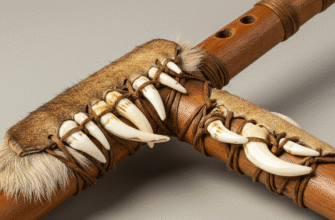Deep within the frigid, often ice-choked waters of the Arctic, swims an animal that seems plucked from the pages of legend: the narwhal. Often dubbed the “unicorn of the sea,” this medium-sized whale captivates our imagination primarily due to one extraordinary feature – its long, spiraling tusk. This prominent appendage, which can extend to astonishing lengths, has puzzled scientists and casual observers alike for centuries, leading to tales of mythical beasts and single-horned wonders. But what is the true purpose of this magnificent, yet seemingly unwieldy, facial spear? The journey to understand its function is a fascinating detective story, blending anatomical study, behavioral observation, and cutting-edge technology.
The tusk itself is not a horn, but an incredibly elongated canine tooth. In most males, it’s the left canine that erupts from the upper jaw, piercing the lip and growing in a distinctive counter-clockwise spiral. These tusks can reach impressive lengths, sometimes exceeding 9 feet (nearly 3 meters), and can weigh as much as 22 pounds (10 kilograms). While predominantly a male characteristic, a small percentage of females may also develop a tusk, though it’s typically shorter and less robust. Even rarer, though documented, are narwhals, almost invariably male, that grow two fully developed tusks, when the right canine also decides to embark on its extraordinary journey of growth. This unique tooth isn’t solid ivory like an elephant’s tusk; it possesses a degree of flexibility and a porous internal structure, critical clues that have slowly helped unravel the mysteries of its varied roles.
Unraveling the Mysteries: Theories of Tusk Use
For generations, the narwhal’s tusk was a source of speculation. Early theories ranged from the practical to the purely imaginative. Was it an ice pick for breaking breathing holes in the dense Arctic pack ice? A formidable weapon for fending off predators or jousting with rivals? Or perhaps a tool for stirring up prey from the seabed? While some of these ideas contain kernels of possibility, modern research has painted a far more complex and nuanced picture, suggesting the tusk is a multi-functional marvel rather than a single-purpose implement.
A Tool for Foraging and Hunting?
One of the more persistent ideas was that narwhals used their tusks to hunt. Some hypothesized they might spear fish, but the tusk’s structure and the lack of observed impalement injuries on prey made this unlikely. The idea of stirring up bottom-dwelling creatures also circulated. However, recent, groundbreaking footage captured by drones has offered a tantalizing glimpse into one possible feeding strategy. Narwhals were observed using their tusks to deliver sharp, precise taps to Arctic cod, apparently stunning the fish momentarily, making them easier to catch and consume. This was a significant observation, providing the first direct evidence of the tusk being actively used in predation. It suggests a delicate, targeted use rather than brute force.
This stunning behavior doesn’t necessarily mean it’s the only foraging use, or even the primary one across all populations or seasons, but it certainly adds a compelling dimension to our understanding. It highlights an ability to use the tusk with dexterity, which aligns with its sophisticated internal structure.
Breaking the Ice Ceiling?
The Arctic environment is defined by ice, and for an air-breathing marine mammal, access to the surface is critical. The theory that narwhals use their tusks to break ice to create or maintain breathing holes has been around for a long time. While they might opportunistically use their heads (and by extension, the base of the tusk) to enlarge small cracks in thin ice, the tusk itself is probably not a primary ice-breaking tool. The risk of damage to such a vital and sensitive organ would be immense. Tusks have been found broken, but this is more likely due to accidents or perhaps intense social interactions rather than routine ice-smashing. Their survival in icy waters is more dependent on finding existing leads (open water channels) or areas of thinner ice they can push through with their robust bodies.
Social Signals and Dominance Hierarchies
The fact that tusks are significantly larger and more prevalent in males strongly points towards a role in social dynamics and sexual selection, much like antlers on deer or the elaborate plumage of some birds. Males are frequently observed engaging in a behavior known as “tusking,” where two individuals align themselves and gently rub their tusks together. This isn’t typically aggressive combat; it seems more like a ritualized display or a form of communication. It could be a way of assessing each other’s size and strength, establishing dominance hierarchies without resorting to dangerous fights. A larger, more robust tusk might signal a healthier, more formidable male, making him more attractive to females or more intimidating to rivals.
The energy investment in growing such a large appendage must have a significant evolutionary payoff. If a prominent tusk increases a male’s chances of mating, then the genes for large tusks will be passed on. Females might choose mates based on tusk size as an honest indicator of fitness, as growing and maintaining such a structure requires good health and resources. These gentle tusk-crossing displays could also play a role in maintaining social bonds or transferring information within the group, though the specifics remain an area of active research.
The Tusk as a Sensory Marvel
Perhaps the most revolutionary understanding of the narwhal’s tusk comes from research highlighting its incredible sensory capabilities. Far from being a dense, inert rod of ivory, the tusk is a highly innervated organ, riddled with millions of microscopic tubules that run from the central pulp, filled with nerve endings, to the outer surface. These tubules allow seawater to penetrate the tusk, bringing it into contact with sensory nerve cells that can transmit information back to the narwhal’s brain.
What kind of information can it sense? Studies suggest it can detect subtle changes in water temperature, pressure, and, crucially, salinity (salt content). The ability to sense salinity gradients could be immensely useful for navigating Arctic waters, finding areas where rivers meet the sea (estuaries often rich in food), or even detecting the different water masses that indicate the presence of specific prey. For instance, the different salinity levels between fresh meltwater and dense seawater, or variations that indicate upwellings of nutrient-rich water, could all be perceptible. It might even detect barometric pressure changes through the water column. This transforms the tusk from a passive ornament or occasional tool into an active, sophisticated environmental sensor, an organic probe constantly sampling the narwhal’s surroundings.
Scientific research has definitively shown the narwhal tusk is far more than inert ivory. Microscopic examination reveals millions of tiny, open tubules that run from the tusk’s core pulp, rich in nerve endings, to its outer surface. These act as conduits, allowing seawater to enter and interact with sensory cells. This complex system effectively turns the tusk into a highly sensitive environmental probe, capable of discerning minute changes in the aquatic environment crucial for survival.
This sensory function might also tie back into foraging. If the tusk can detect subtle chemical cues or particle gradients left by prey, it would be an invaluable aid in locating food in the often dark and murky Arctic depths where visibility is poor. Imagine an antenna, ten feet long, constantly sampling the water for clues that lead to a meal. This sensory hypothesis is compelling because it explains the tusk’s complex internal structure and its constant exposure to the environment.
Other Considered Possibilities
While narwhals are odontocetes (toothed whales) and do use echolocation clicks for navigation and hunting, the tusk itself is not thought to play a primary role in emitting or receiving these sounds in the way a melon (the fatty organ on the forehead of many toothed whales) does. Its structure is not optimized for that. Some have also posited it could be used for defense against predators like killer whales or polar bears, but direct evidence for this is scarce, and its primary functions likely lie elsewhere.
A Multi-Purpose Masterpiece
The narwhal’s tusk, once a symbol of mythical creatures, is emerging as one of the animal kingdom’s most fascinating and versatile appendages. It’s not a case of one single purpose, but rather a suite of functions that contribute to the narwhal’s survival and success in one of the planet’s harshest environments. The evidence strongly suggests a primary role as an extraordinary sensory organ, constantly feeding the narwhal information about its surroundings. Coupled with its importance in social interactions, dominance displays, and mate selection, and its recently observed utility in stunning prey, the tusk is clearly a critical component of narwhal life.
Ongoing research continues to peel back the layers of mystery surrounding this incredible tooth. As technology advances, we will undoubtedly learn even more about how the “unicorn of the sea” employs its singular, spiraling spear. What is certain is that the narwhal’s tusk is a testament to the power of evolution to shape unique and wonderfully complex adaptations.








